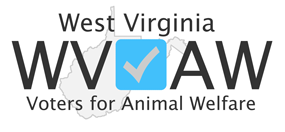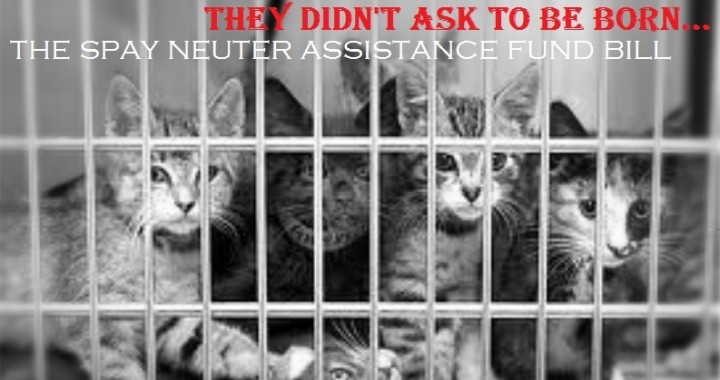WV found a source of funding for the WV Spay Neuter Fund. Thank your legislators for obtaining funding for spay/neuter by supporting HB 2552! This was the report used to help obtain the funding!
Download this Special Report on the Solution for Pet Overpopulation in WV 2017
WV Spay Neuter Special Report 2017
Download this 2 page summary on the WV Spay Neuter Funding Solution for 2017
Spay Neuter Funding 2017
A Solution for the Pet Overpopulation in West Virginia – Saving taxpayer dollars and saving lives!
West Virginia spends over $10 million dollars each year in West Virginia to impound, care for and kill unwanted dogs and cats. Sadly, the majority of the 38% of shelter animals annually killed are healthy adoptable animals. We need to spend the money on preventing the problem rather than dealing with the aftermath of unwanted dogs and cats. Finally, the passage of a 2013 bill established a WV Spay Neuter Fund with the Department of Agriculture. The WV S/N fund rules passed in the 2015 session which formally establish this fund making it viable to receive money and begin its implementation. The benefits go beyond compassion for animals. It would help save local governments and shelters millions of dollars, assist low income West Virginians to alter their pets and contribute to public safety.
2014-15 WV Pet Facts & Statistics from FOHO WV – New data for 2016 will be posted soon.
20,000 Euthanized or 40% of 50,000 total intake in 30 of 55 counties. 65% US & WV households have pets. [Past trends =WV higher pet ownership than US] $10 million dollars spent annually for animal control throughout West Virginia
$218 is cost per animal housed in a WV shelter. 40% of all animals entering WV shelters are killed 444,686 dogs in WV households 486,110 cats in WV Households
*West Virginia Animal Euthanasia and Control Statistics are difficult to pinpoint since no state reporting structure exists for compiling these statistics. In 2013, the WV Veterinary Board began collecting intake data at the request of FOHO WV along with their yearly euthanasia data for their certified euthanasia technicians. While this has helped, only 30 counties report.
WV Statewide Spay/Neuter Fund
West Virginia must find a sustainable & reliable funding source for this existing fund.
Other states are working effectively to solve their pet overpopulation problem with varying funding solutions.
Optional Funding Sources that have been explored: #6 is the best choice!
- Income tax check off would not be dependable or consistent. People do not respond well to giving more money after paying their taxes and research has noted that the amount raised in this manner is not likely to be large.
- Surcharge on rabies vaccinations. Veterinarians do not like this idea. They cite additional work on their end and fear that clients will not have their pets vaccinated if they increase the price. The spay/neuter program will be completely dependent on the cooperation of the veterinarian community; therefore, any attempt to use this funding method could potentially be devastating to the success of the program.
- Raising the dog license/registration fee would be perceived as an increase in taxes. Raising the fee is actually a reasonable idea as the fee has been $3.00 for over 50 years. The money does not cover the cost of properly maintaining a shelter or providing animal control. Local groups raise money to assist in running the local shelter. Raising this fee could assist with spay neuter services if the money was designated for it.
- A yearly appropriation from the legislature. This would need to be a large enough amount to be effective and be continued every year. It could not be guaranteed. Not dependable and pits us against other worthy WV groups who need funding.
- Specialty License Plate: Many other states have this already and it does provide funding as seen in the Maine model below. But it would not be enough to sustain the fund.
- Surcharge on manufacturers’ pet food fee paid for a permit to sell products in WV. This is the most logical and cost effective way to raise the funding for a statewide spay/neuter program. There is already in place a mechanism that requires pet food manufacturers/distributers to buy a license or permit to sell their products in our state. This is done through the Agriculture Department. A surcharge would be added to this already existing permit fee for pet food only. This would not include livestock or poultry feed. Specialty food, such as for birds, fish, etc., is not included in the surcharge. This would be a consistent stream of funding. Most important is the fact that this is not a retail or consumer tax on WV citizens. The pet food companies don’t necessarily need to pass this cost on to the consumer; but even if they did, it would equal approximately 1.00 per year per pet, and only pet owners would pay this very small extra cost. This pet food fee is ONLY charged on the registered brands of dog food and paid to the WV Dept. of Agriculture. Pet food companies pay this fee to have their food sold within the state. In 2015, Pet Food Sales in West Virginia totalled $196 million dollars. It is big money and growing yearly. All we are asking is that the brand registration be increased slightly to provide money into the spay neuter fund.
Suggestions on obtaining grants has been made too. Our concern with grants is that is the way most animal advocacy groups are forced to operate in the state so now we are competing against other worthy animal advocacy groups. We know how competitive it is to get grant funding and it provides no ongoing source of funding. Do not be distracted by those arguments on how all of this can work.
Maine has a population well below WV of 1.3 million. They adopted a Pet Food fee (surcharge on brands coming into the state) in 2005 that has been proposed in WV. That is a surcharge on Pet Food brands registered with the WV Dept. of Agriculture. The shelter intake has dropped by 20% in Northern Maine alone.
Spay/Neuter Model from Maine
| Year (fiscal) | Pet Food Fee | License Plate | Tax Check-off | Co Pay for Spay/Neuter | Donation | *Pet Store Fee | Total |
| 2012 | 100,000 | 54,000 | 16,000 | 25,000 | * | 28,000 | 249,000 |
| 2014 | 100,000 | 70,955 | 16,000 | 21,069 | 1,614 | 17,960 | 240,973 |
- *Pet Store fee of $25 for selling unaltered animals
- *Donation dollar amount was not available at time of data retrieval
Maryland passed a law in 2014 using the Pet Food Surcharge adding $100 to each pet food brand being sold in their state. This brought in $388,000 initially to over a million dollars per year in a phased in approach.
By utilizing multiple sources like Maine and Maryland, and with a grant from the ASPCA and others, it would be a beginning to help WV save millions of dollars and lives.
Sources of Data:
The Federation of Humane Organizations of West Virginia (FOHO WV) www.fohowv.org website
Source: 2015 pet food sales data from http://www.petfoodindustry.com/blogs/7-adventures-in-pet-food/post/6038-pet-food-sales-update-us-spending-up-22-in-2015

